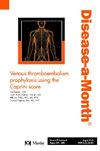Opioid use and abuse in adolescents and young adults; dealing with science, laws and ethics: Charming the COBRAS
IF 4.3
3区 医学
Q1 MEDICINE, GENERAL & INTERNAL
引用次数: 0
Abstract
The subject of substance use disorders in the pediatric population remains a disturbing conundrum for clinicians, researchers and society in general. Many of our youth are at risk of being damaged and even killed by drug addictions that result from the collision of rapidly developing as well as vulnerable central nervous systems encountering the current global drug addiction crisis. A major motif of this chemical calamity is opioid use disorder in adolescents and young adults that was stimulated by the 19th century identification of such highly addictive drugs as morphine, heroin and a non-opiate, cocaine. This analysis focuses on the pervasive presence of opioid drugs such as heroin and fentanyl that has become a major tragedy in the 21st century arising from an overall substance use and misuse phenomenon rampant in global society. Themes covered in this article include the history of addictive drugs in humans, diagnostic terms in use, the role of neurobiology in drug addiction, and current psychopharmacologic approaches to opioid overdose as well as addiction. Our youth are continuously confronted by dangers of high-risk behaviors including death and injury from opioid use disorders due to their central nervous system neuroplasticity as well as the widespread availability of these harmful chemicals. Healthcare professionals should actively assist our youth who unknowingly and even innocently encounter this deadly menace in the 21st century.
青少年和青年中阿片类药物的使用和滥用;处理科学,法律和道德:吸引眼镜蛇。
对于临床医生、研究人员和整个社会来说,儿科人群的药物使用障碍仍然是一个令人不安的难题。在当前全球毒瘾危机的影响下,快速发育和脆弱的中枢神经系统发生碰撞,导致许多青少年面临被毒瘾损害甚至致死的风险。这场化学灾难的一个重要主题是青少年和年轻成年人的阿片类药物使用障碍,19 世纪对吗啡、海洛因和非阿片类药物可卡因等高成瘾性药物的鉴定刺激了这一现象。本文分析的重点是海洛因和芬太尼等阿片类药物的普遍存在,它已成为 21 世纪全球社会普遍存在的药物使用和滥用现象所引发的一大悲剧。本文涉及的主题包括人类使用成瘾药物的历史、使用中的诊断术语、神经生物学在药物成瘾中的作用,以及当前针对阿片类药物过量和成瘾的精神药理学方法。由于中枢神经系统的神经可塑性以及这些有害化学物质的广泛供应,我们的青少年一直面临着高风险行为的危险,包括阿片类药物使用障碍造成的死亡和伤害。在 21 世纪,医护人员应积极帮助那些在不知情甚至是无辜的情况下遇到这种致命威胁的青少年。
本文章由计算机程序翻译,如有差异,请以英文原文为准。
求助全文
约1分钟内获得全文
求助全文
来源期刊

Dm Disease-A-Month
医学-医学:内科
CiteScore
5.70
自引率
2.50%
发文量
140
审稿时长
>12 weeks
期刊介绍:
Designed for primary care physicians, each issue of Disease-a-Month presents an in-depth review of a single topic. In this way, the publication can cover all aspects of the topic - pathophysiology, clinical features of the disease or condition, diagnostic techniques, therapeutic approaches, and prognosis.
 求助内容:
求助内容: 应助结果提醒方式:
应助结果提醒方式:


